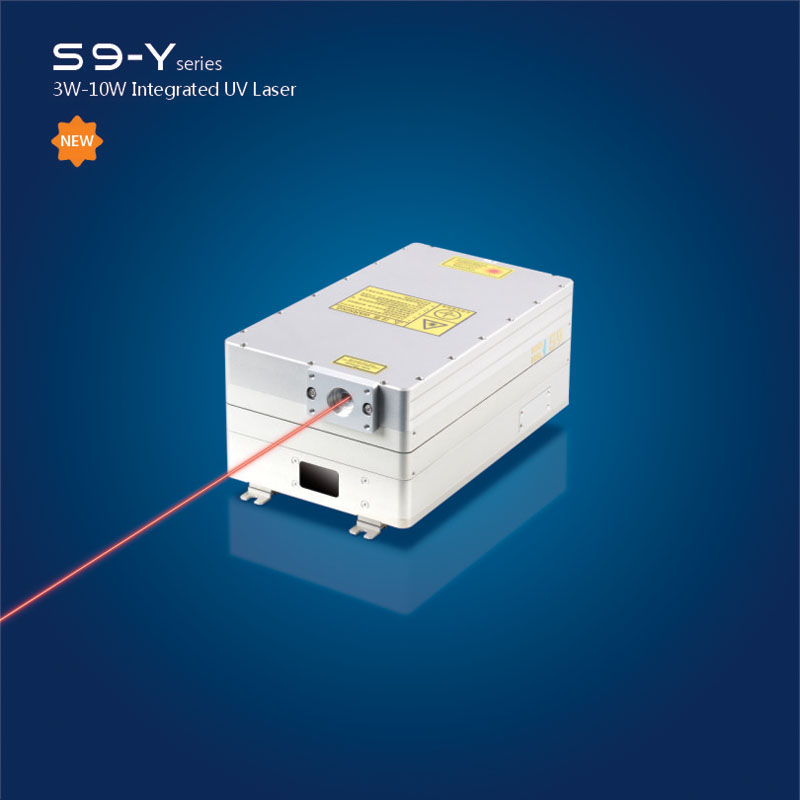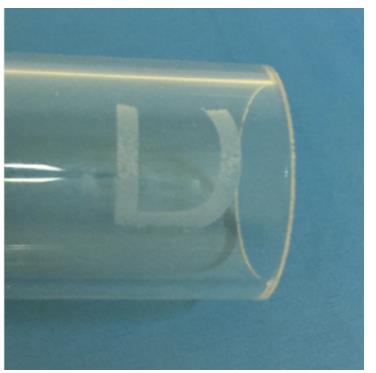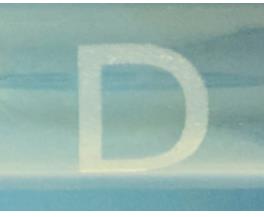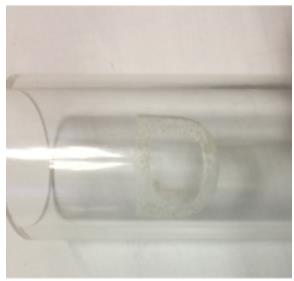
Investigación sobre tecnología de marcado de vidrio con láser UV
Aug 17 , 2022Research on UV Laser Glass Marking Technology
This article will guide you to understand and master the processing technology of UV laser marking on glass surface.
one. Glass marking difficulty
When a beam of light hits the glass, some of the light is reflected off the surface, and most of the rest is passed directly through. The same is true for UV lasers. When UV lasers are used to etch the glass surface, extremely high energy density is required. However, if the energy density is too high, cracks or even chipping may occur. If the energy density is too low, the punched points will sink or cannot be directly The surface is etched, so the processing is difficult.
two. Influencing factors
1. flat glass
UV laser marking on flat glass is directly related to the peak power of the laser, the size of the final focused spot, and the speed of the galvanometer.
We have found that sometimes the light from high power lasers does not etch the glass surface, but passes directly through. This is because the peak power of the laser is not enough, or the energy density is not concentrated enough. The peak power is affected by the laser crystal, pulse width and frequency. The narrower the pulse width and the lower the frequency, the higher the peak power of the laser. The energy density is affected by the spot size and the beam quality M2 of the laser beam (the standard for measuring the laser beam, which refers to the value of the laser beam close to the Gaussian beam, Gaussian beam M2=1). The spot size can be changed by using a high magnification beam expander. M2 can only be determined by the beam quality of the laser itself. The smaller the M2, the greater the beam expander magnification, the more concentrated the energy density.
Although some can be etched on the surface of the glass, it still produces the phenomenon of leakage, and some points formed by the pulse will sink into the glass to form an internal engraving. This situation can be improved by using a high peak power laser and a high magnification beam expander. processing effect.
In addition, the time that the laser beam contacts the glass surface also affects the etching effect of the glass surface. Too long contact time may cause the glass surface to be hit too deep, and too short a contact time may cause leakage. We only need to change the scanning speed of the galvanometer to an appropriate value to get a better processing effect. However, it should be noted that the scanning speed is also affected by the frequency of the laser itself, and if the frequency is too low, it will also lead to leakage.
Research on UV Laser Glass Marking Technology
(RFH LASERLP106-5w processed flat glass)
2. Curved glass
Due to the influence of the bending force, the focal depth of the final focused spot and the scanning method of the galvanometer are particularly important to the processing effect, that is, the peak power of the laser, the final focused spot, the scanning speed of the galvanometer, the scanning method of the galvanometer, the focal depth of the spot and the field scope of the mirror, etc. When the energy density reaches the standard, we will find that the effect on the glass surface is worse as it goes to the edge, and it cannot even be processed on the surface. The reason is that the depth of focus is too shallow. The focal depth is affected by the M2 factor of the laser beam, the spot size of the beam expander, and the range of the field lens. The magnification of the beam expander and the range of the field lens both affect the focal length. The shorter the focal length, the more concentrated the energy density and the shallower the depth of focus. Let's take a look at the effects of different depths of focus. As shown in the figure below, when RFH LASER5w laser, SCAN-LAB high-speed scanning galvanometer, F=160 field lens, X10 times beam expansion, X8 times beam expansion, X5 times beam expansion, the effect of etching on the surface of quartz glass :
Investigación sobre tecnología de marcado de vidrio con láser UV

(Expansor de haz X10 veces)
Investigación sobre tecnología de marcado de vidrio con láser UV

(Expansor de haz X8 veces)
Investigación sobre tecnología de marcado de vidrio con láser UV

(Frente de expansión de haz X6 veces)
Investigación sobre tecnología de marcado de vidrio con láser UV

(X6 veces el lado del expansor de haz)
Como se muestra en las imágenes anteriores, podemos observar claramente que bajo la expansión del haz 10x, la densidad de energía está relativamente concentrada y la superficie es muy delicada, pero debido a la poca profundidad de enfoque, los láseres en ambos lados no funcionan en el superficie. Bajo la expansión del haz 8x, para el producto curvo actual, la profundidad focal y la energía son más adecuadas y el efecto de marcado es mejor. Sin embargo, la profundidad focal de expansión del haz de 6 veces aumenta y también reduce la densidad de energía, por lo que hay muchas fugas y el efecto es pobre.
Por lo tanto, concluimos que para tales materiales de vidrio con grandes superficies curvas y alta dureza, se debe seleccionar un láser con mejor calidad de haz y un ancho de pulso más estrecho, y se debe usar un expansor de haz adecuado o un galvanómetro de enfoque variable 3D para procesar el vidrio. Los productos son más adecuados.
RFH LASER lanzó un nuevo láser UV refrigerado por agua de 5w~7w (LP106, SP355) para este tipo de marcado de vidrio. El factor M2 de este láser es inferior a 1,3, que está cerca del valor del haz gaussiano (M2=1), lo que garantiza la calidad del haz; El ancho de pulso puede alcanzar los 10 ns a la frecuencia de 30 KHZ, lo que garantiza la potencia máxima; el método de enfriamiento de enfriamiento por agua asegura la estabilidad del funcionamiento continuo de la cavidad del láser. Se puede ver que este láser proporciona una fuente de luz ultravioleta estable para el procesamiento y marcado de vidrio.